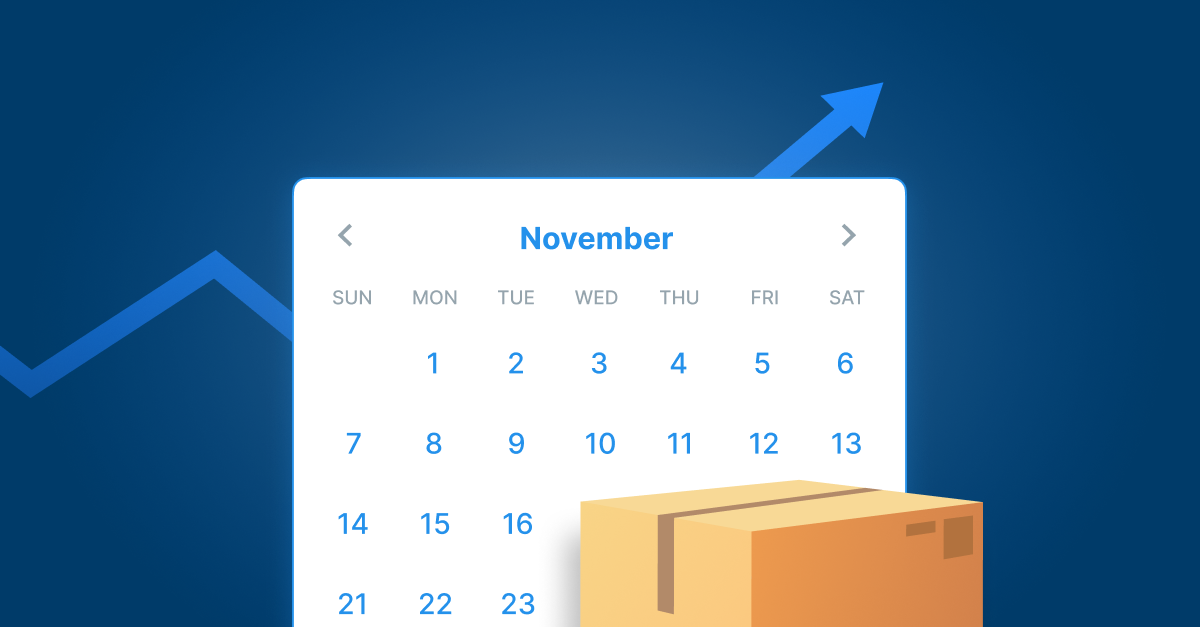Peak Season 2025: The Surcharges are Here, But It's Not Too Late to Optimize

Major parcel carriers have begun imposing their annual peak or demand surcharges, and in many cases, it’s at steeper levels than last year. Shippers are already feeling the pinch in their weekly invoices, but the good news is that it’s not too late to take action.
Whether you’re finalizing your holiday shipping plan or trying to offset some rising costs before max volume hits, there are still smart moves you can make. Let’s walk through:
- A roundup of current surcharges
- Why regional carriers might still be a viable late-season option
- How to use your shipping data (via our Contract Comparison Tool) to respond tactically
1. A roundup of current surcharges
Carrier surcharges have become as seasonal as the holidays themselves, but this year’s increases are especially steep. Across Amazon, FedEx, UPS, and USPS, surcharge windows extend from late September through mid-January, with spikes in late November and December.
Here’s a quick snapshot of what’s happening:
- UPS: Demand surcharges started Sept. 28, 2025 and run through Jan. 17, 2026, with rate hikes across Additional Handling, Large Package, and Over Maximum categories. (read more)
- FedEx: Demand surcharges began Sept. 29, including increases of up to 20% year over year on Additional Handling and Oversize categories. (read more)
- USPS: Holiday rate adjustments apply to Priority Mail, Ground Advantage, and Parcel Select through January, with added fees ranging from $0.30 to $16 per package. (read more)
- Amazon: Peak season surcharges start Oct. 26, with highest points from Nov. 23 to Dec. 27, and include a per-package demand surcharges and additional Large, Heavy, and Additional Handling fees. (read more)
2. Why regional carriers might still be a viable late-season option
Many shippers assume it’s too late to adjust their carrier strategy once October hits. But regional carriers still offer flexibility, cost relief, and faster delivery in targeted zones, especially for last-mile shipments.
Some, like Veho, are even adding capacity right now to serve more customers in more areas ahead of peak season. And, others like Jitsu tout flexibility when “plans change” and speed of scale and onboarding.
So, is it too late? Maybe not. Even modest diversification can pay off:
- Lower cost per package: Regionals often avoid or minimize peak surcharges, offering up to 10–20% savings versus national carriers.
- Faster transit times: With more localized networks, regionals can improve speed and reliability in specific service areas.
- Added capacity: When national networks tighten, regionals can absorb overflow without the same volume penalties.
As we pointed out earlier this year, pairing regional carriers with smart network optimization helps offset the steepest surcharge tiers. Even adding just one regional carrier could help stabilize costs.
3. How to use your shipping data to respond tactically
Switching or supplementing carriers doesn’t have to be a guessing game. Our Parcel Contract Comparison Tool lets you instantly model how rate structures, surcharges, and regional carriers stack up based on your actual shipment history.
With this tool, you can:
- Compare carrier contracts side by side to pinpoint where surcharges hit hardest.
- Model “what-if” scenarios (like shifting 10% of residential volume to a regional).
- Forecast savings in real dollars using your historic shipment data.
It’s a fast, data-driven way to make confident adjustments, rather than relying on hunches in the middle of peak season.
Unavoidable, but not uncontrollable
Peak season surcharges are unavoidable, but uncontrolled costs aren’t. By combining reliable data with flexible carrier options, you can mitigate the sting of 2025’s rate hikes and protect your margins before the holidays hit their apex.
If you’re ready to see how much you could save, learn more about our Parcel Contract Comparison Tool, and enter the season with a clearer picture of your parcel spend.



